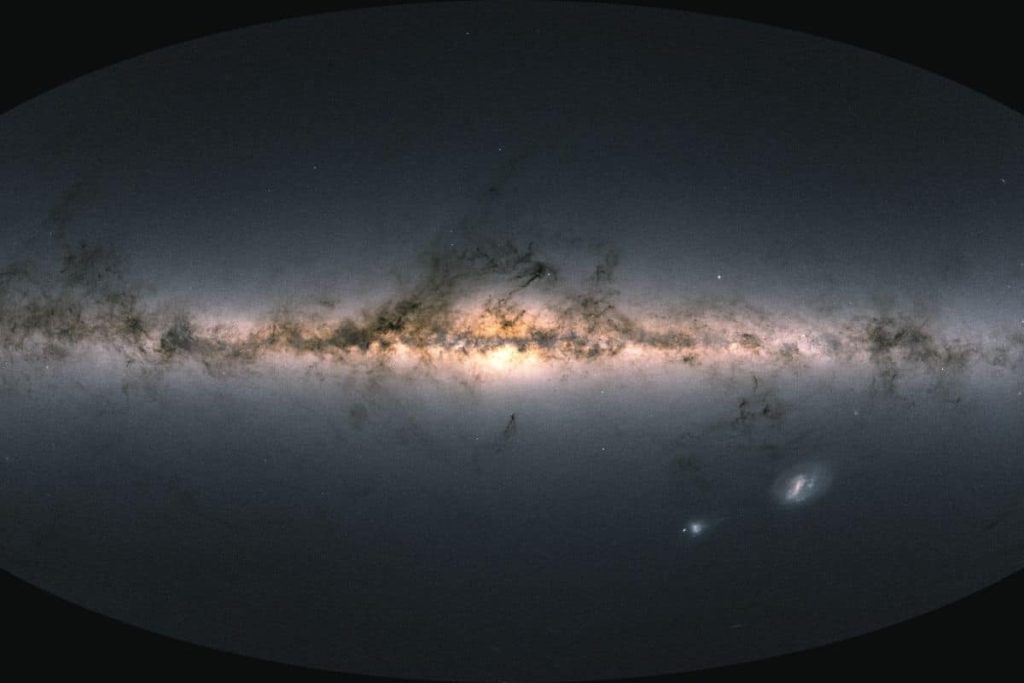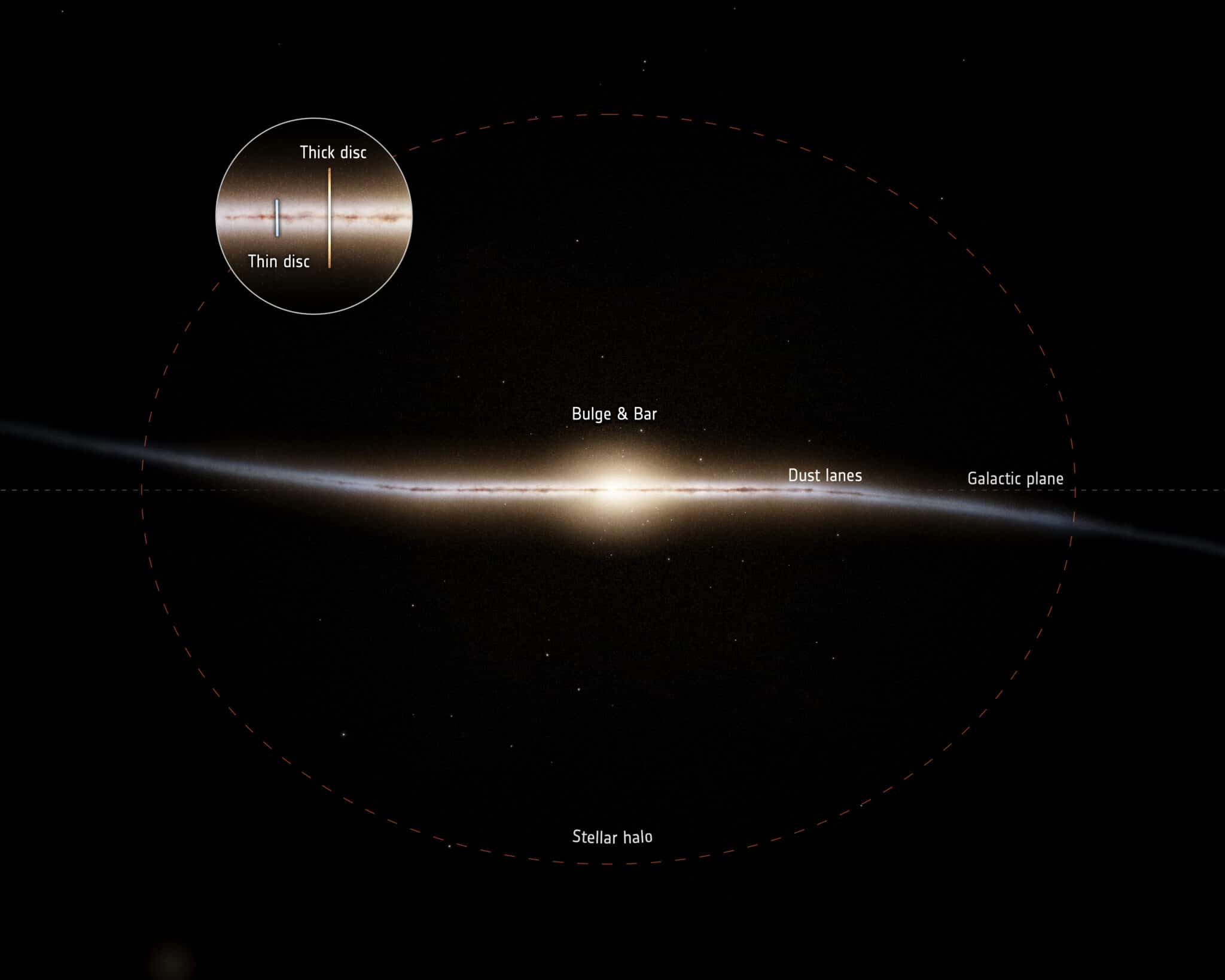This appears to have formed about 13 billion years ago – just 0.8 billion years after the Big Bang.
Our Milky Way galaxy contains what is called a thick and thin disk. The thin disk contains most of the stars of our galaxy, which we recognize by the hazy band of light in the night sky. On the other hand, the thicker disk contains much fewer stars. In a new study, researchers studied unusual stars called “sub-stars” in both disks. This allowed the researchers to build a timeline of the formation of the Milky Way. This leads to a surprising discovery.
Thus the Milky Way has a thick and thin disk. But what exactly do you have to imagine with that? If you look at the Milky Way on a clear night – away from light pollution – you’ll basically see the thin disk of our galaxy. It is 100,000 light-years wide, but only 1,000 light-years thick, and is home to most of the stars in our galaxy. These stars are relatively small. Our Sun is part of the thin disk, as are all nearby stars that you can see with the naked eye. The thicker disk contains far fewer stars than you can see with the naked eye. These stars extend up and down the thin disk; The thick disk is about 3000 light-years thick and therefore thicker than the thin disk. In this thick disk we find older stars.
Researchers are interested in the different stages our Milky Way has gone through. But to know the ins and outs of it, you also need to know the age of the stars. However, the age of the star is one of the parameters that is difficult to determine.
giants
There is an exception. Because only it is easier to know the age of the so-called “sub-branches”. Sub-stars are stars that do not generate energy and turn into red giant stars. Since the “giant stage” is relatively short, its life can be determined with great accuracy. But… Where do we find these stars? Fortunately, the Gaia Space Telescope can lend a hand.
age
The Gaia space telescope has been scanning the sky for years, trying to record the location, distance, and motions of stars. With the help of Gaia, the researchers were able to locate, study and infer the age of 250,000 giant stars. “Using the data from Gaia, we can very accurately determine the age of the sub-giant,” said study researcher Maosheng Xiang. Armed with exact ages for a quarter of a million sub-giants spread across the Milky Way, the researchers were then able to construct a timeline of the formation of the Milky Way.
thick disc
It leads to an amazing discovery. Because analysis shows that a part of the Milky Way known as the “thick disk” began forming 13 billion years ago – just 0.8 billion years after the Big Bang. This is unexpected. Because it means that the thick disk is about 2 billion years older than previously thought.
two stages
The analysis shows that the formation of the Milky Way can be divided into two different stages. In the first phase, which began 0.8 billion years after the Big Bang, the thick disk began forming stars. This process accelerated two billion years later when a dwarf galaxy merged with the Milky Way. This ‘starburst’ – caused by the merger – formed the nascent thick disk of most of its stars and continued to form until the gas was exhausted about six billion years after the Big Bang. The thin disk was formed during the second stage of formation of the Milky Way.
Overall, the new study gives us a better picture of the life path of our Milky Way. This means that long-term assumptions – such as those about the age of the fatty disc – need to be reconsidered. And perhaps more wonderful discoveries await us. Because a new data set from Gaia is expected in June. “With each new analysis and data set from Gaia, we are able to understand the history of our Milky Way in more detail than ever before,” said study researcher Timo Prusti.

“Total coffee specialist. Hardcore reader. Incurable music scholar. Web guru. Freelance troublemaker. Problem solver. Travel trailblazer.”








More Stories
GALA lacks a chapter on e-health
Weird beer can taste really good.
Planets contain much more water than previously thought